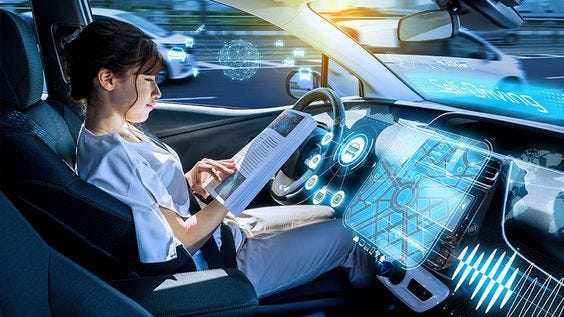Autonomous Vehicle: Described as self-driving cars, autonomous vehicle technology has no doubt been the most significantly advanced technologies in transport today. Indeed, much more promising to revolutionize transportation in its wake, it boasts of the ultimate combination of sensors, artificial intelligence, and advanced algorithms. Its impact is huge in many ways, touching the automotive industry and regulatory bodies that have pushed it forward through broad-scale adoption.
Understanding Autonomous Vehicle Technology
It forms the central part of all the technologies that facilitate an autonomous vehicle to work through very complex systems enabled to sense and interpret their environment, decide, and take charge of specific driving tasks. These include:
1. Sensors: AVs will carry a combination of LIDAR (Light Detection and Ranging), cameras, radar, and ultrasonic sensors to guarantee a 360-degree view of its surroundings and locations of all obstacles, traffic lights, lane markings, etc.
2. Artificial Intelligence and Machine Learning: AI algorithms will process data garnered from sensors to interpret the environment for a vehicle to predict their behavior, other users’ behavior, and take suitable decisions while driving. Improvement is provided by Machine learning which continues in real life, absorbs certain experiences in real time.
3. Connectivity: The more autonomous vehicles the vehicles are intended to communicate with road infrastructure or any road user of whatever form in any possible context, also referred to as Vehicle-to-Everything communication. This makes it easier for safety as the vehicle can share traffic conditions, accidents, or hazards with one another.
Benefits of Autonomous Vehicles
The possible advantages of AVs are too many.
Safety Enhancements: Most deaths experienced on the road are due to human blunders. All deaths or injuries caused by circumstances such as distraction, fatigue or unhealthy habits at the drivers’ wheel will be a thing of the past with AVs.
Mobility: The self-driving automobile would free all those who could not drive: the aged and the physically challenged. A human could flourish in magnificence through an opportunity of high mobility.
Traffic Efficiency: AVs will probably talk to each other in such a way that the traffic flow is optimized. Decisions are made based on more information which probably should improve traffic even further.
Environmental Impact: EV will probably be part of all AVs. Smart design will probably reduce usage on driving patterns.
The future, as it seems fully autonomous, vehicles still appear not to be an easy walk in the following ways.
Regulatory Barriers: As such, the governments are left perplexed about what they should regulate them-so high stringent safety measures, liabilities, and infrastructure developments-it becomes quite tough for development and deployment across a quilt work of different regions.
Public Acceptability: The acceptance level of consumers determines the overall success of AVs. The issues surrounding public acceptability include fear regarding safety, being replaced by driving assistants, and privacy concerns.
Technological limitation: AV technology has gone a long way but, of course, with no limit to it. Such an environment is extremely complex and high-density with people and cyclists also presents some specific challenges yet to be researched upon.
The Future Road
The promise of future-proof lies with the automobile manufacturers, tech companies, and policymakers because it moves on to the dream of the autonomous vehicle. Technologies are getting insights through their pilot programs on the kind of tech and its integration into our life. Improvement in AI, sensor technology, and connectivity will continue and perfectly achieve the goal of achieving fully autonomous vehicles.
These cars will fundamentally change transportation to be safer, more efficient, and accessible systems. Indeed, quite some time has yet to go, but continued investment in this technology, coupled with discussion of its implications, will have to drive our vision of a future where there is more automation on our roads.
